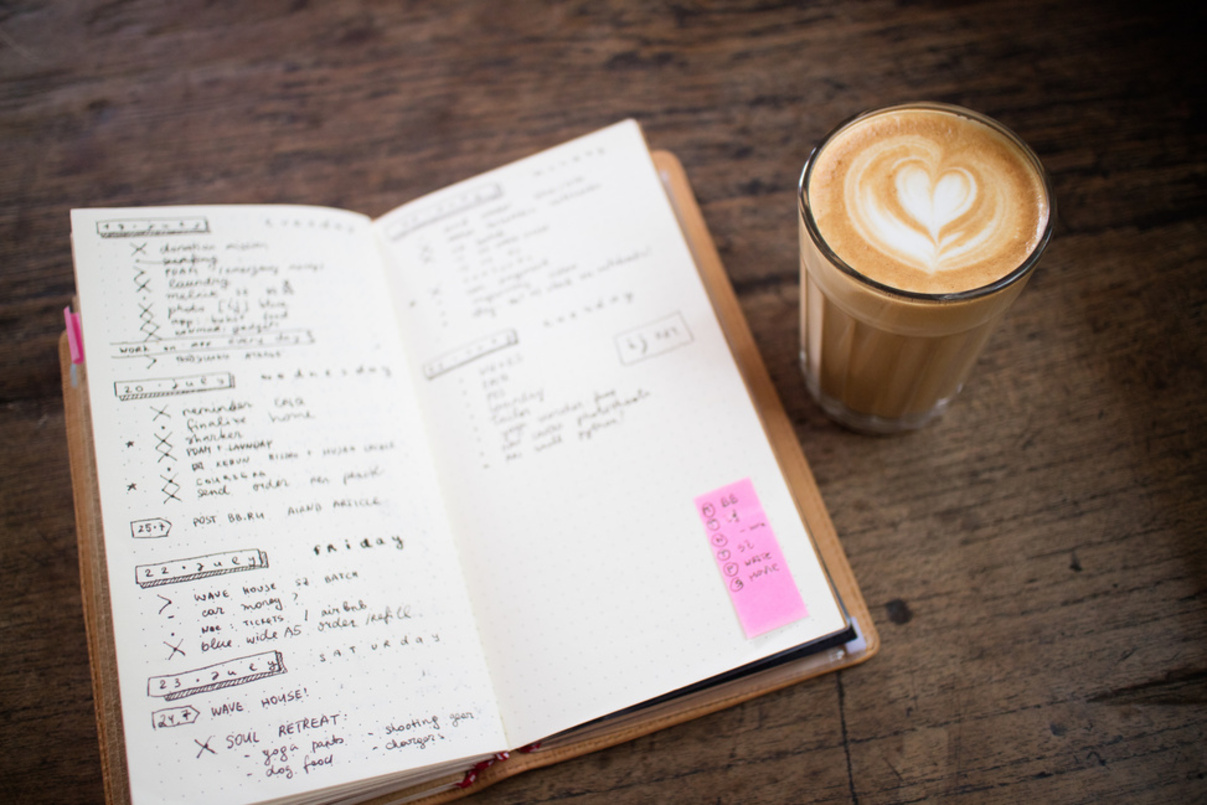When I entered the corporate world, I decorated my desk with a celebration of corporate life: a daily Dilbert calendar. I looked forward to tearing off a page when I got to work in the morning. Three on Mondays.
On the kitchen wall, we have a photo of the iconic seventh green at Pebble Beach. My daughter has a dry-erase weekly calendar and she loves marking School, Church, and Swim Lessons on it. On the wall behind me, I have a calendar that shows the entire year; it’s dry-erase, too. Love that thing.
And who can forget Benjamin Franklin’s daily planner, where he did his best to order his days for industry, justice, and peace, despite the unpredictability of his life?
Paper calendars are a tried-and-true technology, in all their forms.
- Permanence. Once you write it down, there’s nothing you can do to accidentally delete an event. Accidentally clicking in the wrong place won’t move the meeting on you. If a digital calendar brings flexibility, a paper calendar brings stability. You can still move what you need to, but it won’t happen unintentionally.
- Reduced distractions. How many times have you put away your phone, only to realize that the social media, news feeds, and text messages weren’t why you pulled your phone out in the first place? Oh, yeah—you wanted to block out some time this weekend to head down to the putting green. Unfortunately, your phone is filled with apps designed to wring every ounce of attention out of you that they can. Your paper calendar has no red dots, no dings, no banners to distract you. It’s your calendar. It does one thing and it does it well.
- Easy to schedule. Need to schedule a meeting with someone next Thursday? Flip to the right day and write their name down. If you need more than half an hour, draw a little line. You’re done. No fiddling around, deciding which fields in a Create New Event popup need filled out and which you can leave alone. It’s as fast as dictating an event (if not faster) with fewer transcription errors.
- Beautiful selection of papers. All digital calendars look pretty much the same. With paper calendars, there are a few standard layouts, but an endless variety of paper styles, colors, and textures. Want a fun floral print for spring? How about something that reflects the caliber of your position? Something minimalist? Whatever your style, you can find a paper planner that fits you.
- Incredibly adaptable. Let’s say you want to reserve 1–2pm on your calendar every day this week. On a digital calendar, go to week view, then draw a rectangle that starts at 1pm on Monday, goes down for 1 hour to 2pm, and goes across to 2pm on Friday. Oh, it can’t do it? Hmmm. Can you put a red star next to something to call your attention to it? Write in bigger letters because it’s important? Shade the background to reserve a block of time for certain types of activities without actually creating an event there? No? That’s too bad. Paper handles that just fine.
Paper calendars absolutely have their strengths and advantages over digital calendars, but they’re not perfect. For example, you can experience data loss. Complete and total data loss. Just lose your planner. Poof! It’s all gone. And because the data doesn’t sync, if you don’t have your planner with you, you’re flying blind.
Funny enough, paper calendars have bugs, too. My year-at-a-glance wall calendar has May Day on June 1. These bugs can’t be fixed by a software update. On the plus side, most bugs are going to be easily worked around, like crossing out June 1 and writing “May Day” on May 1.
Nonetheless, paper calendars are highly reliable. The trade-offs compared to a digital calendar are mainly a matter of personal preference and style. With a little bit of forethought, it probably wouldn’t be hard to set up a calendar system that gives you the best of both worlds.
Question: How do you use paper calendars? Share your thoughts in the comments, on Twitter, LinkedIn, or Facebook.

